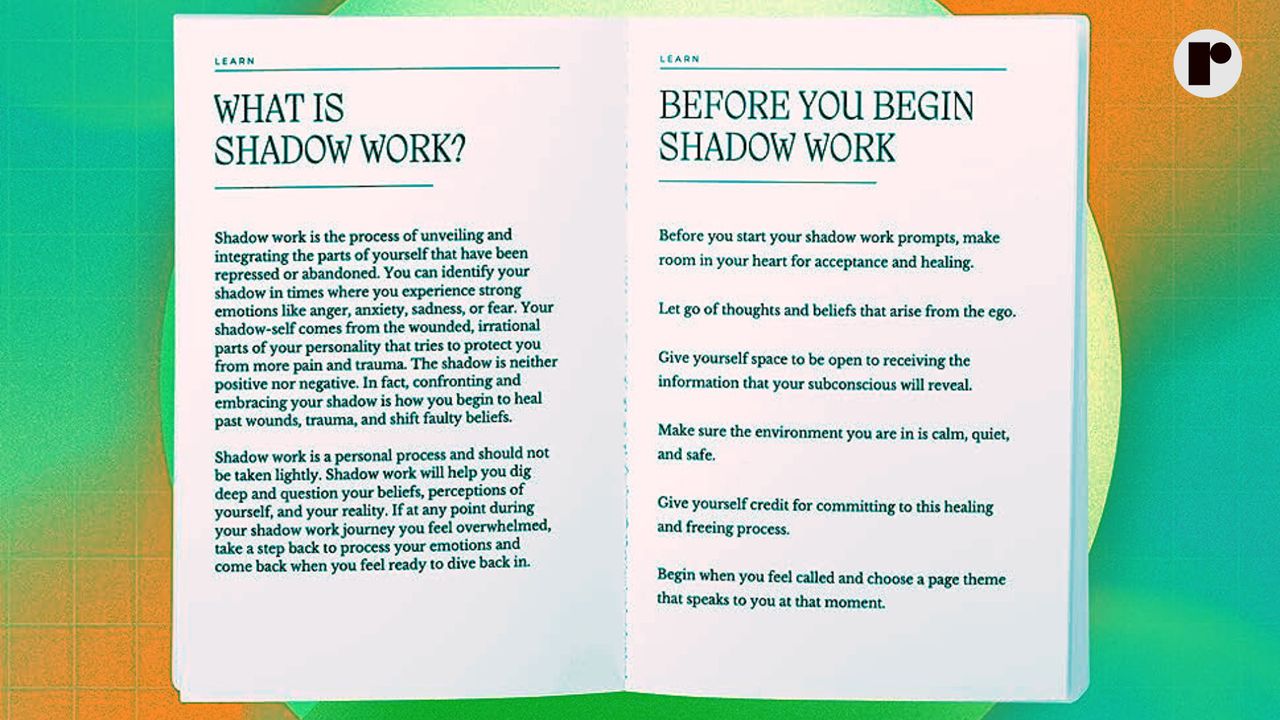Is TikTokâs shadow work journal the next big thing in mental health?
Studies from The National Alliance on Mental Health in 2021 found that “one in 5 U.S. adults experience mental health illness each year.” People are looking for quick solutions to their mental struggles. And one of the easiest places to search is social media.
If you have been recently scrolling through TikTok, there’s a high chance you saw an ad or two (or 50) for “The Shadow Work Journal.” Or 50. Written by self-help author Keila Shaheen, founder of mental health e-commerce store ZenfulNote, the book has spread like wildfire.
With over 340,000 copies sold in the TikTok store, it has its fair share of fans and haters. TikTok user Jess Lee stated that the journal “has been a game changer for healing.” While TikTok user Aja says the journal is meant to “summon your demonic self.” Regardless of where you stand, is shadow work life-changing — or another TikTok money grab?
What is your shadow and shadow work in the first place?
Imi Lo, consultant and author of “Emotional Sensitivity and Intensity” and “The Gift of Intensity,” says that the shadow represents the hidden parts inside of us: “In shadow work, we dive into the deeper, less familiar aspects of our psyche. We acknowledge them, embrace them, and ultimately bring them into our conscious awareness. This process can lead to greater self-understanding, personal growth, and emotional healing,” Lo said. .”
Others agree that shadow work can be beneficial. Anu Oluwa, a neuroscience-based life coach and Yoruba claircognizant channeler, says: “The shadow is our personal defense system that is often riddle with tales of what others believe are threats. When we cleanse out our system and relearn our own personal triggers, we become more healthily connected to our environment, our peers and ourselves without any fears.”
According to Anu Oluwa, a neuroscience-based life coach and Yoruba Claircognizant Channeler, “…The shadow is our personal defense system that is often riddled with tales of what others believe are threats. When we cleanse out our system and relearn our own personal triggers, we become more healthily connected to our environment, our peers and ourselves without any fears.”
To help the reader realize and accept their shadow, chapters of the journal include mirror gazing, breathwork, and inner child affirmations. With a Bachelor of Science degree in marketing, psychology, and creative studies from Texas A&M University, Shaheen used her additional studies of “cognitive-behavioral therapy, mindfulness…” to help put together an effective shadow work plan.
And with very handy experience once serving as a TikTok creative strategist, it’s no wonder the journal refuses to leave your feeds. But that doesn’t mean that this journal is a quick solution to the real shadow work that’s needed, according to Lo.
“It’s good that online platforms are spreading important ideas that can help people. But we must be careful online because social media can make complex things seem too simple. It’s like a quick introduction that often lacks the deep details these ideas need…It waters down the real work you need to do, which is deeply psychological, spiritual, and often involves some trauma work that needs careful handling,” Lo said.
From Oluwa’s standpoint, how you view shadow work will greatly impact its effect on your life.
“…There is a lot of power behind what a person believes, and it is evident, if someone wants to believe in shadow work being positive and is open to adopting it as a practice, they are likely to reap the benefits than a person who is in fear, anti-therapy and under the belief the past is the past,” Lo said.
So…is shadow work legit?
With any TikTok trend, it’s fair to have some initial doubts. Just because it is popular on social media doesn’t mean it is the safest thing for you (never forget the #milkcratechallenge). According to Lo, however, shadow work is crucial to know and accept every part of yourself.
“…In simpler terms, think of it as facing two aspects of yourself: the ‘Persona’ is the image we show to the world, while the ‘Shadow Self’ is the hidden part we’d rather not acknowledge. When you ignore your shadows, they can come to the surface unexpectedly and cause us to act in surprising and sometimes problematic ways,” Lo said.
These principles that are used in “The Shadow Work Journal” stem from the concepts of Swiss psychiatrist and psychoanalyst Carl Jung. He believed that despite the negativity that the shadow self could hold, there could be positivity there as well. Therefore, working and accepting your shadow self in his eyes could give a person a deeper understanding of themselves and the world around them.
Where can you even start?
At the end of the day, only you can say if shadow work and “The Shadow Work Journal” are helpful to you. It is your own mental and spiritual journey, and you deserve to choose what is best for you. But if you want to take some small first steps, there are ways to incorporate shadow work into your daily routine.
“A simple engaging activity one can have with shadow work is asking themselves if what they are doing at this moment is what they desire to do,” Oluwa said. “This essentially brings forward the awareness of how intentionality, present-moving behavior and consideration allows one to act in true alignment to self and not in fear.”
Remember: This is a process that takes time and doesn’t require perfection. Be gentle with yourself and don’t expect immediate results.
“Anticipate resistance along the way; your ego may resist uncovering uncomfortable truths to protect you,” Lo said. “…If at any point the emotions become too overwhelming, consider reaching out to someone for support. Sharing your journey with a trusted friend or therapist can provide valuable guidance and assistance.”
